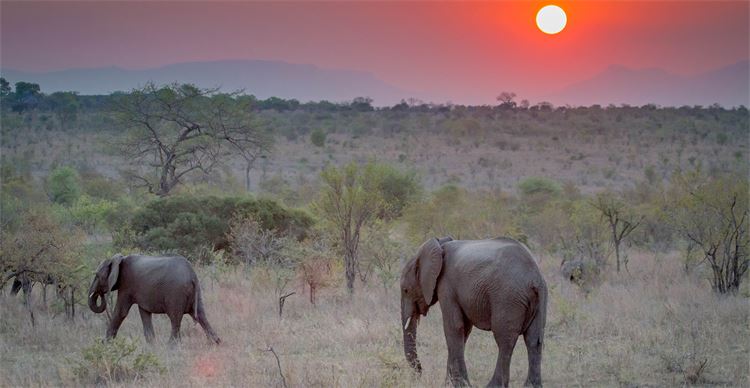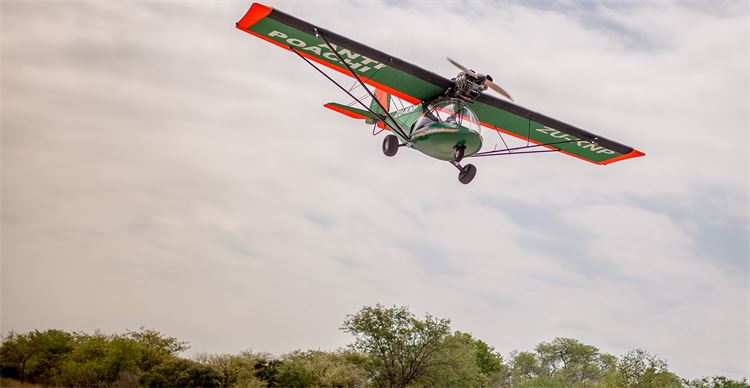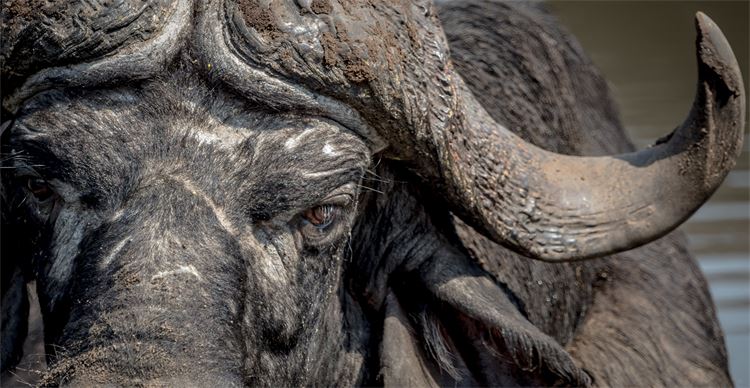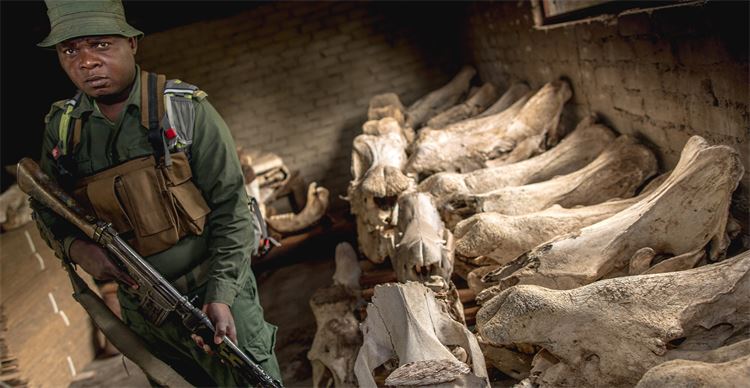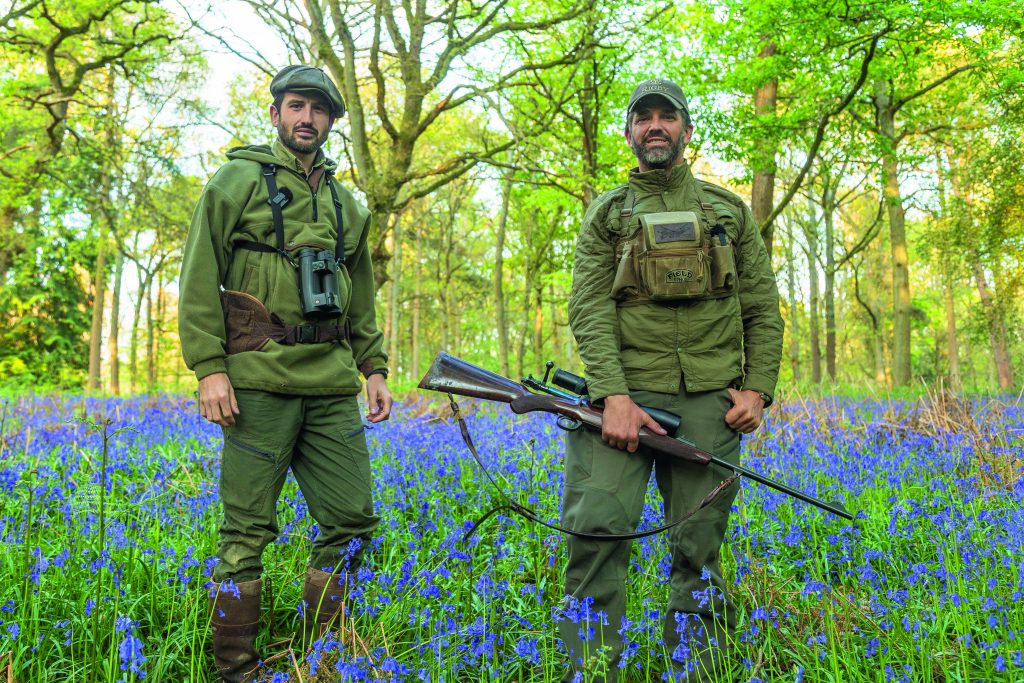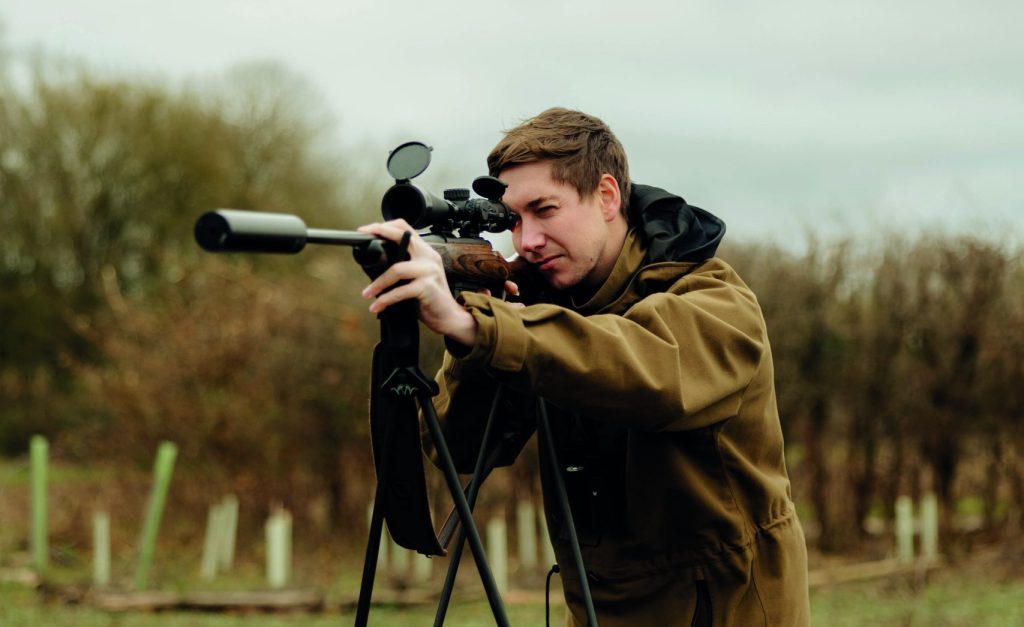Unacceptably ethical
Trophy hunting is often completely misunderstood. The greatest threat to Africa’s wildlife isn’t hunting – it’s ignorance.

I find it remarkable how many people, even keen game Shots, consider trophy hunting to be completely unjustifiable. “But what’s the difference between a grouse and a gazelle?” I will ask them. And I mean it – the justification behind game shooting in the UK is exactly the same as it is for hunting kudu, buffalo or even elephant in Southern Africa. The animal is humanely despatched and part of the substantial investment made by the hunter goes back into the management of that species in order to maintain a surplus in coming years. Without the surplus, there is no hunting.
The term ‘trophy hunting’ is an unfortunate one because it suggests that the ‘trophy’ or taxidermy is the sole reason for the hunt. The vast majority who hunt do it for the challenge and the enriching experience of being on safari in spectacular surroundings. For most, the ‘trophy’ serves as a memento, a respectful acknowledgement of a great hunt and an appreciation of the animal taken.
African wildlife conservation can only be justified if that ground generates enough revenue to support local communities whilst maintaining a healthy ecosystem. Take away the game animals, and you no longer have an incentive to manage that landscape in a way that ensures the promulgation of wildlife. Simply put, wildlife must justify its presence in economic terms. And nowhere is this more crucial than in poverty-stricken sub-Saharan Africa. And it just so happens that one of the most effective ways of making wildlife pay, particularly in areas where photographic tourism is not viable, is through trophy hunting. Sure, people will flock to the Okavango Delta, Masai Mara or Serengeti with their cameras, but what about the rest of the continent? There are great swathes of Africa that your average tourist isn’t vaguely interested in visiting.
Why should the killing of a buffalo be any less acceptable than the killing of a grouse for the same reason? Both are cleanly and humanely taken, they are consumed (in Africa, often providing much needed protein to impoverished rural communities), both generate income for the local economy, create jobs and the far-reaching conservation benefits to the relevant ecosystems cannot be overstated. But there is a tendency for people to ignorantly claim that every species, from leopard to elephant and rhino, aren’t nearly populous enough to warrant hunting. Again, think about that in the context of grouse or trout, or even sheep and cattle – the fact that there is a demand for these animals is the very reason why there is a surplus. As long as there are people willing to pay good money to hunt big game, there is an incentive to supply it – and in order to supply it and sustain it, you’ve got to manage their habitats.
Contracts for both government and private hunting concessions are granted on the basis that the hunting operator will be responsible for anti-poaching patrols, providing gainful employment for locals, ensuring that any infrastructure such as camps, lodges, fences, tracks or roads are built and maintained and, wherever possible, recovering all game meat for local consumption or retail. Everything is utilised. Money is injected into the rural economy, into research and conservation, and the safari staff become the managers of areas that would otherwise be susceptible to indiscriminate poaching for meat, ivory, rhino horn or other animal products, often destined for the Far East.
South Africa is currently experiencing a rhino poaching pandemic: in just a decade over 8,300 rhinos have been lost to poachers. And these poachers are indiscriminate and brutal in their methods and selection – no animal is spared, including cows with unweaned calves. Moreover, the poachers are neither skilled marksman nor well equipped; many rhino are wounded and left to die a slow and painful death.
As a result, conserving rhino is becoming increasingly difficult, dangerous and expensive. Funded by the taxpayer, specially trained and fully-armed anti-poaching units are deployed to act as a deterrent, either capturing the poachers and handing them over to the authorities, or driving them back over the border into Mozambique from whence they came. But effectively patrolling an area of two-million hectares – approximately the same size as Wales – is an impossible task and more often than not the poachers remain undetected until the rhino carcasses are discovered, sometimes weeks later. Worryingly, Kruger National Park has been a poaching hotspot for a number of years, with 504 rhinos illegally in 2017 and 421 in 2018.
But in South Africa, privately-owned game reserves and ranches amount to in excess of 20 million hectares, supporting more than 16 million head of game – 10 times as many as there are in Kruger National Park – making private land absolutely crucial to South Africa’s wildlife conservation efforts. More than 25 per cent of South Africa’s 18,000-plus white rhino are privately-owned. But on private land, the onus is with the landowners to foot the bill for any anti-poaching initiatives – they don’t get any pay-outs from the government. But to what end? It would surely be far easier (and more cost effective) for them to just get rid of the rhino. “Our situation is a desperate one,” says Pelham Jones, chairman of the Private Rhino Owners Association. “We are reliant on the economic viability of rhino in order to justify and sustain their ownership.”
“Private landowners need sources of income to protect their animals,” adds Michael ‘t Sas-Rolfes, a wildlife resource economist who has studied economics of rhino ownership for more than two decades. And one of the key economic drivers is regulated trophy hunting, which provides private landowners with an incentive to manage and protect their wildlife from external threats. Rhino are just one example of how hunting can in fact be hugely beneficial to wildlife conservation. As long as there is a demand for trophy animals by hunters, landowners can justify ploughing money into habitat rejuvenation and management, research, breeding programs and rigorous anti-poaching initiatives.
And let us not forget that the trophy hunting industry was central to the success story that saw southern white rhino make it back from the very brink of extinction in the early 1900s. By introducing legitimate private ownership of white rhino and legalising trophy hunting in the 1970s – both considered to be highly controversial moves at the time – the Natal Parks Board paved the way for one of the most remarkable recoveries of a critically endangered species in history. Within 10 years the live auction value of southern white rhino had rocketed from R200 per animal to R250,000. “The trophy hunting market has driven this increase in the price of live rhinos, making the breeding of rhino an attractive option,” adds ‘t Sas-Rolfes. “And not only to private landowners, but also to the national and regional parks who have also generated revenue by selling rhino to the private sector.”
This remains one of the greatest conservation success stories on record. The late, great Dr. Ian Player, the main driving force behind Operation Rhino, acknowledged the crucial role that trophy hunting played: “Hunting led to the increase from 437 rhino in 1953 to in excess of 18,000 in 2010. For the loss of a few animals (for the purposes of trophy hunting), their overall numbers increased. Regrettably, this is a form of logic that is lost on most people.”
Compare this to Kenya where, since 1977, all consumptive wildlife use (including trophy hunting) has been banned. In the 1970s, Kenya and SA had approximately the same population of game – somewhere between 1 and 1.5 million head. Over the next 35 years, however, Kenya’s wildlife numbers decreased by about 80 per cent to approximately 300,000 head of game – an average loss of between 4 and 4.5 per cent per annum. Meanwhile, in SA, where a policy of full wildlife utilisation was adopted, including a thriving trophy hunting industry, game numbers flourished to in excess of 20 million head of game.
And while South Africa is now home to 90 per cent of the world’s southern white rhino, Kenya has only 361 (a 2010 estimate), all of which were introduced from South Africa.
And yet, prompted by the dangerously inaccurate and biased messages of animal rights groups, people are only too quick to jump onto the anti-hunting bandwagon, often substituting the word “poaching” with the word “hunting’” as if they are one and the same thing. On the whole, trophy hunting in Southern Africa is very carefully regulated to ensure that strict quotas are adhered to and hunting practices are humane, ethical and of the highest standards. Professional hunters must pass rigorous tests and exams before a government-issued licence is granted. This licence pertains not only to the country in which the examinations were sat but also the specific region or province. There are stringent codes of conduct and strict rules and regulations that apply to each and every species that can be legally hunted. And the hunting of any species listed by CITES will of course be subject to additional international import and export laws. Poaching on the other hand, is illegal, ungovernable, unregulated and is done indiscriminately. There’s a big difference. And yet, even the mainstream press in the UK will often quote “hunting” as being the cause for the dramatic drop in rhino numbers in recent years.
And it is this highly emotional anti-hunting rhetoric, driven by animal rights groups and exacerbated by mis-informed journalists, that is arguably the greatest threat to Africa’s wildlife. They are not driven by the effect that shooting or hunting has on wildlife populations or ecosystems, they are motivated by the very virtues that make us human – our tendency to feel sympathetic towards anything that appears vulnerable or threatened and our subsequent willingness to make charitable donations. They know that the majority of their city-dwelling target audience are ignorant to the ways of the countryside and find the killing of any wild animal, in any context, to be distasteful. But finding something distasteful is hardly justification for its abolition though, is it?
Southern Africa’s fenced, private reserves and game ranches are, generally, diasporic in nature, and an important part of any hands-on wildlife management regime within an enclosed area is the need to maintain checks and balances on wildlife populations. Natural resources are finite and, therefore, so are carrying capacities. Excess stock must be removed, either sold at live game auctions or to trophy hunting outfitters. It’s a system that works – both for the landowner and for the greater good of wildlife.
Sustainable hunting has proven to be a major conservation tool in the 20th and 21st centuries. It contributes towards maintaining wildlife populations and biodiversity by giving wild animals a value far greater than that of their meat. In South Africa, hunting has done just that: on a typical conventional grassland ranch, the return on investment from game ranching is several times higher than that for cattle ranching. Wildlife industries now contribute a total of R9 billion to South Africa’s GDP. “The human rural population is doubling every 20 years,” says wildlife author Ron Thomson. “Twenty-five per cent of South Africa’s population are unemployed; and it is poverty that is driving the current poaching juggernaut. Today the poaching problem is focused on the rhino – tomorrow who knows what it will be. But today’s rhino poaching is just the beginning of a coming avalanche. With the kind of poverty-stricken human pressure that is still to come (even within our gazetted national parks) what chance has wildlife to survive the current century?”
To ensure the survival of wildlife, we must add value to animals by making them essential to the livelihoods of human beings, especially in rural areas. This is the simple reality of Africa today.
Ezemvelo KZN Wildlife, the official conservation agency for the province of KwaZulu Natal, South Africa, has been involved in successfully setting up several community-owned and run wildlife conservancies and in advising these communities on how to manage their reserves. “We advise them to engage in hunting as part of their revenue generation,” says CEO Dr. Bandile Mkhize. “Many of these communities can survive today, because of the money generated by hunting. So I don’t, for the life of me, believe that there is any merit in the argument that we should stop hunting.”
It has been argued by moral absolutists that wilderness should not have to justify its existence by being productive, but the truth is that if land use does not provide meaningful economic and social betterment, particularly in rural areas, the future of Africa’s wildlife will remain under threat.
Related Articles
Get the latest news delivered direct to your door
Subscribe to Fieldsports Journal
Elevate your experience in the field with a subscription to Fieldsports Journal, the premium publication for passionate country sports enthusiasts. This bi-monthly journal delivers unparalleled coverage of game shooting, fishing and big game across the UK and beyond.
Each issue offers a stunning collection of in-depth features, expert opinions and world-class photography, all presented in a timeless yet contemporary design.
Save 10% on shop price when you subscribe, with a choice of packages that work for you. Choose from Print & Digital or Digital only with each journal delivered directly to your door or via the app every other month, plus access to past issues with the digital back issue library.






